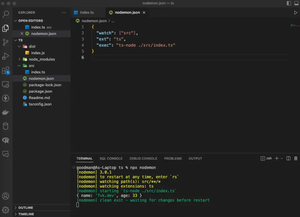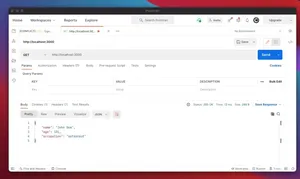TL;DR:
In the landscape of Node.js frameworks, Express.js and Nest.js are prominent players for building backend APIs. Express.js is minimalist and unopinionated, offering great performance and flexibility. Nest.js, built with TypeScript, is opinionated and heavily inspired by Angular, providing a robust architecture for scalable applications. The choice between the two often comes down to the specific needs of the project, developer preference, and the level of abstraction desired.
Overview of Express.js
Express.js is a lightweight web application framework for Node.js, designed for building web applications and APIs. It is known for its simplicity, speed, and minimalistic approach. Express.js provides a thin layer of fundamental web application features, without masking Node.js features.
Overview of Nest.js
Nest.js is a framework for building efficient, reliable and scalable server-side applications. It is built with and fully supports TypeScript out-of-the-box. Nest.js uses progressive JavaScript, is built with and fully supports TypeScript, and combines elements of OOP (Object Oriented Programming), FP (Functional Programming), and FRP (Functional Reactive Programming).
Performance Comparison
When it comes to performance, Express.js is generally faster due to its minimalistic nature. Nest.js, while offering more features out of the box, might have slightly lower performance due to its additional abstraction layers. However, for most applications, the difference in performance is negligible.
Flexibility vs. Structure
Express.js offers great flexibility, allowing developers to structure their applications however they prefer. On the other hand, Nest.js comes with a strong architecture and enforces a certain structure, which is useful for larger teams and applications, ensuring a unified codebase.
Learning Curve
For beginners, Express.js might be easier to start with due to its simple nature. Nest.js has a steeper learning curve, especially for developers not familiar with TypeScript or Angular-like concepts.
Ecosystem and Community
Express.js has a larger ecosystem and community support as it’s been around for much longer. There is no shortage of plugins and middleware available for Express.js. Nest.js is growing rapidly and has a supportive community, with a focus on modern, full-stack TypeScript applications.
Use Cases
Express.js is ideal for small to medium-sized projects and for cases where you need to quickly prototype an application. Nest.js is better suited for large-scale enterprise applications, where a clear and maintainable structure is crucial.
TypeScript Support
Express.js has TypeScript support, but it is not as seamless as in Nest.js, which is designed with TypeScript in mind. If TypeScript is a priority for your backend application, Nest.js may be the more obvious choice.
Conclusion
Both Express.js and Nest.js are capable of building robust backend APIs, but their suitability depends on the project requirements, team expertise, and long-term maintenance plans. Express.js is a great choice for quick development cycles and smaller applications, while Nest.js shines in larger, more structured projects that can benefit from its robust foundations and TypeScript integration. Ultimately, the best framework is the one that aligns with your project goals and team skills.

